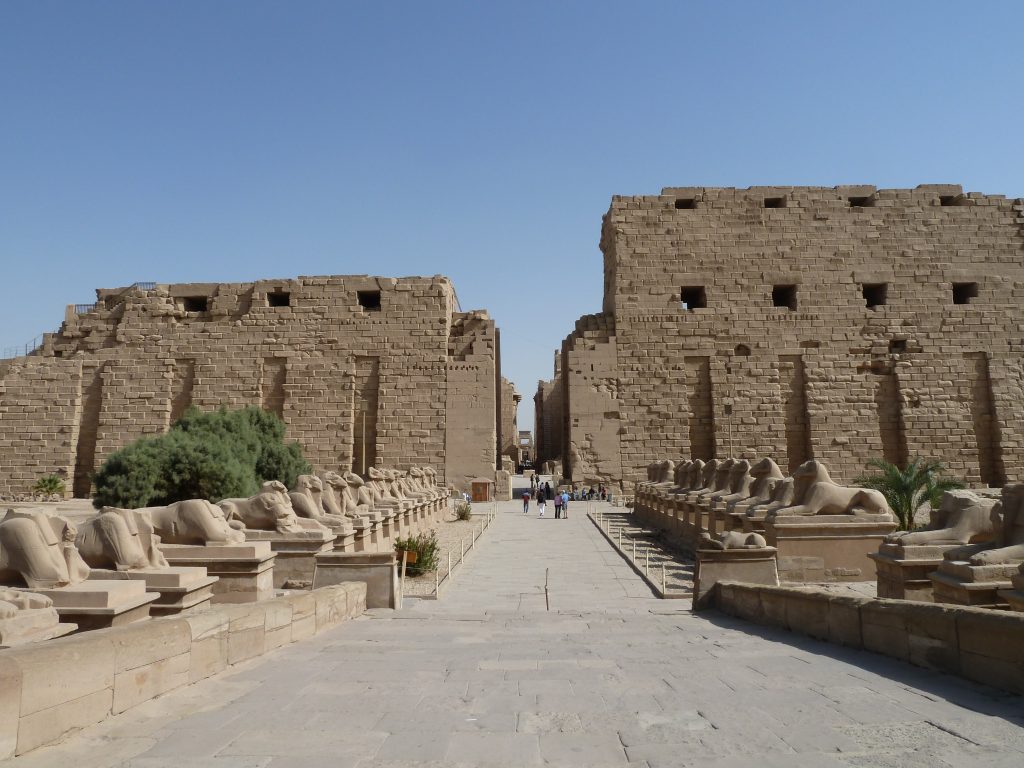Karanak temple
Karanak temple History After a century of foreign occupation, the New Kingdom (1550-1150 BC) of Egypt emerged, with its capital at Thebes.
The captial city was embellished with grandiose temples worthy of the majesty of the pharaohs, the greatest being Karnak.
The temple complex of Karnak,
dedicated to the Pharoah Amun, was the center of his worship and of his wife Mut and their son Khons.
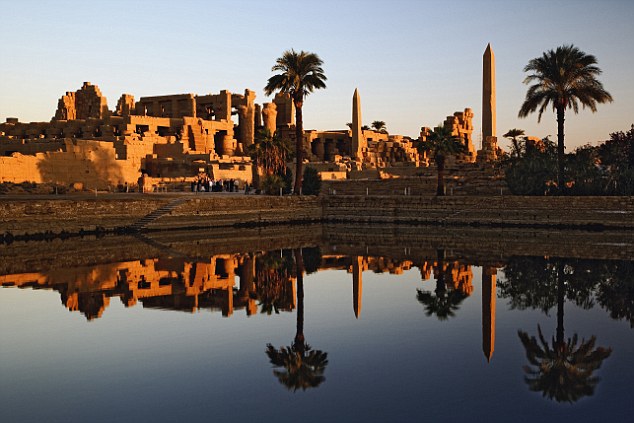
Each of them had a “precinct” (area) in the temple complex, the greatest and largest belonging to Amun.
There was also a precinct for Montu, the falcon-headed local god. Construction on the Karnak temple complex began in the 16th century BC and continued into the Greco-Roman period – a period of up to 1300 years of construction.
Around 30 successive pharoahs added their own touches to the complex: a new temple, shrine, or pylon and carved detailed hieroglyphic inscriptions.
When the pharoah Akhenaton abandoned the traditional worship of Amun and took up the worship of Aten, the sun god, he built a temple to Aten at Karnak.
But after his death, the Theban priests destroyed all signs of sun worship at Karnak and elsewhere.
What to See The Karnak temple complex is huge,
covering a site almost a mile by two miles in area. There are over 25 temples and chapels in the complex, including separate shrines for the three boats that took the statues of the gods on their annual trip on the flooding Nile.
Sanctuaries, obelisks, and groups of columns all feature accounts of the heroic deeds of the sponsoring pharoah.
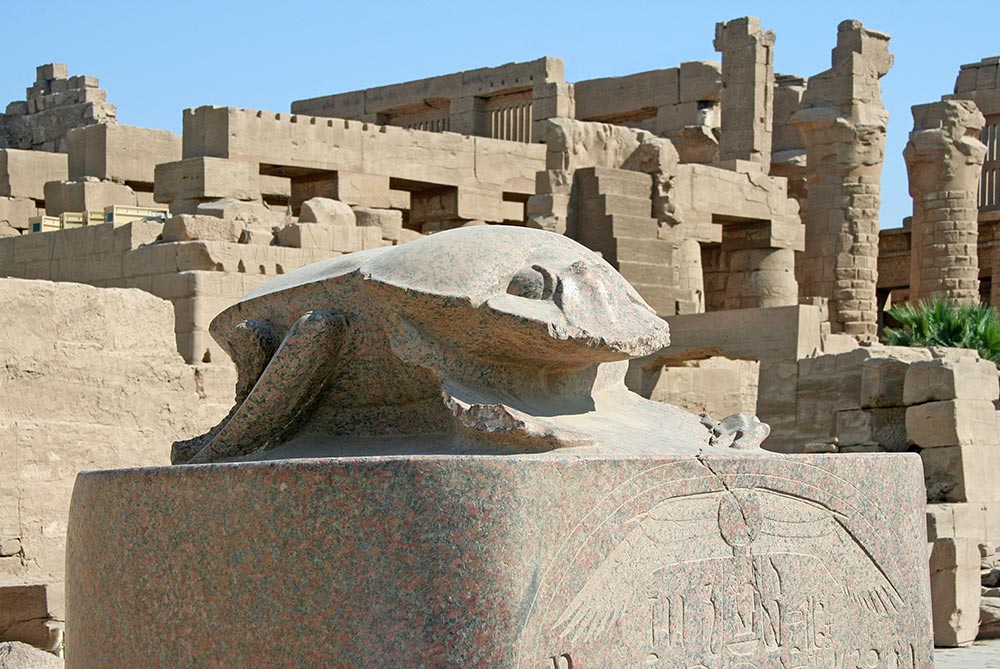
The key difference between Karnak and most of the other temples and sites in Egypt is the length of time over which it was developed and used.
Approximately 30 pharaohs contributed to the buildings, enabling it to reach a size, complexity and diversity not seen elsewhere.
Few of the individual features of Karnak are unique, but the sheer size and number of features makes it one of the most impressive temple complexes in Egypt.
The Karnak complex includes several of the finest examples of ancient Egyptian design and architecture. Among them are the Hypostyle Hall, considered one of the world’s great architectural achievements.
It is filled with 134 enormous pillars, the highest 70 feet tall, and each about 45 feet around.
The hall covers an area of 64,586 sq ft. The most spectacular of the temples at Karnak is the Temple of Amun (Amun’s Precinct), the only section open to the public.
This is entered via the Avenue of the Sphinxes, or Sacred Way,
that once stretched the two miles from Karnak to Luxor Temple.
The Obelisk of Thutmose I, a 22m (71ft) monument, is the only one of four original obelisks that is still standing.
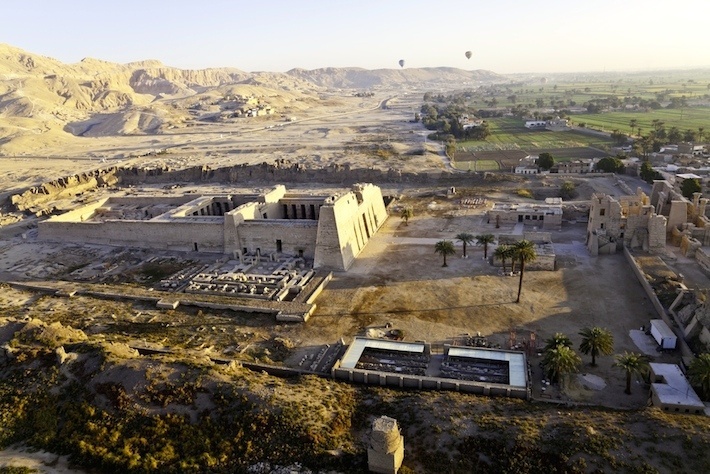
Getting There The vast majority of tourists visit Karnak Temple as part of an organised coach tour, but it is also possible to take a public minibus (25pt) from Luxor Bus Station, or hire a taxi or caleche (horse and cart) – both officially priced at £E10 – from the center of Luxor.
Quick Facts Site Information Names:
Karnak Temple; Ipetisut (The Most Select of Places)
Location: Luxor, Egypt
Faith: Ancient Egyptian Dedication: Amun and the Theban Triad
Category: Egyptian temples; World Heritage Sites
Architecture: Egyptian Date: 16th century BC-300 BC Size: Area: 1 mile x 2 miles or 247 acres
Status: ruins
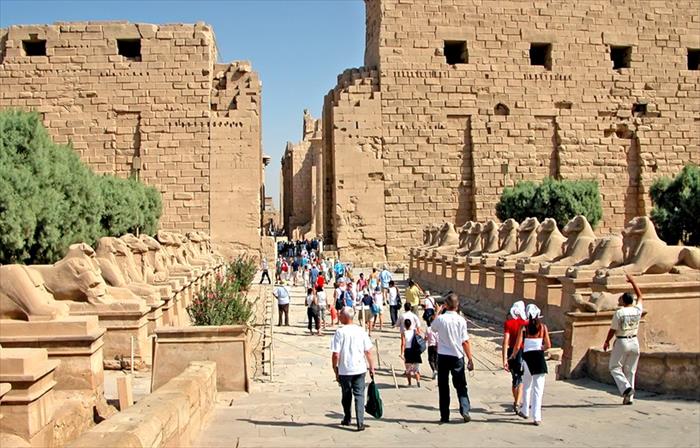
Photo gallery: Karnak Temple Photo Gallery Visitor Information
Address: Luxor Tourist Office, Nile St, Luxor, Egypt
Coordinates: 25.718333° N, 32.657778° E (view on Google Maps)
Lodging: View hotels near this location Phone: (095) 382 215 or (095) 373 294
Public transport: Bus, taxi or caleche from Luxor city center (see Getting There above).
Facilities: cafe near Sacred Lake; toilets near grandstand and open-air museum
Note: This information was accurate when published and we do our best to keep it updated, but details such as opening hours can change without notice.
To avoid disappointment, please check with the site directly before making a special trip.


